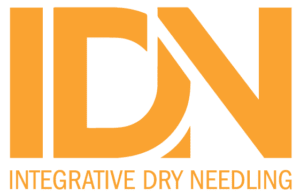Methodological considerations for dry needling trials in medial tibial stress syndrome
J Man Manip Ther. 2025 Dec 2:1-2. doi: 10.1080/10669817.2025.2595629. Online ahead of print. NO ABSTRACT PMID:41328671 | DOI:10.1080/10669817.2025.2595629
Home / My Account / Dry Needling Research
Authors:
Joanna Rajfur, Katarzyna Rajfur, Łukasz Kosowski, Karolina Walewicz, Robert Dymarek, Kuba Ptaszkowski, Jakub Taradaj
Sci Rep. 2022 Sep 22;12(1):15803. doi: 10.1038/s41598-022-19980-1.
ABSTRACT
Dry needling (DN) is a standard procedure for treating musculoskeletal disorders. However, there are no clear recommendations for using DN in low back pain (LBP). Therefore, this study aimed to assess the effectiveness of the novel DN program for reducing pain intensity and improving functional efficiency in patients with chronic LBP. A group of 40 patients with chronic LBP due to the L5-S1 discopathy were eligible and randomized into experimental (n = 20) and control (n = 20) groups. The DN program was performed for the experimental group according to the Five Regulatory Systems (FRS) concept. The control group received sham therapy using placebo needles. DN sessions were performed twice a week for 4 weeks. A single needling application lasted 60 min. Both groups received standard treatment and physical exercise of LBP for 1 month. Subjective pain was measured by a visual analog scale (VAS), functional efficiency was assessed with the Oswestry Disability Index (ODI), and the lower spine range of motion was measured with the Schober test. There were significant differences in pain reduction (VAS) in both groups (p < 0.001). The strongest analgesic effect in the DN group yielded 6.45 points immediately after the therapy, 6.2 points after 1 month, and 6 points after 3 months. The DN group scored higher VAS reduction than the control group (p < 0.001). There were significant differences in the functional state (ODI) in the experimental group (p < 0.001). There was a significant ODI decrease by 18.1 points, after 1 month by 18.9 points, and after 3 months by 17.6 points. No significant differences were found in the control group (p > 0.05). Intergroup differences were observed in the functional efficiency in ODI in all measurement time-points (p < 0.001). There were significant differences in the range of motion (Schober test) in the DN group (main effect: p < 0.001). For all measurements, differences (p < 0.001) were observed in favor of DN compared to the control. In conclusion, DN program according to the FRS concept stands for the novel treatment method supplemented by an exercise program, effectively reducing pain and improving functional efficiency in LBP patients.
PMID:36138055 | DOI:10.1038/s41598-022-19980-1
J Man Manip Ther. 2025 Dec 2:1-2. doi: 10.1080/10669817.2025.2595629. Online ahead of print. NO ABSTRACT PMID:41328671 | DOI:10.1080/10669817.2025.2595629
J Man Manip Ther. 2025 Nov 29:1-10. doi: 10.1080/10669817.2025.2591677. Online ahead of print. ABSTRACT OBJECTIVE: Clinical guidelines recommend combining exercise with other
J Bodyw Mov Ther. 2025 Dec;45:493-501. doi: 10.1016/j.jbmt.2025.08.015. Epub 2025 Aug 31. ABSTRACT OBJECTIVE: Myofascial pain syndrome (MPS) is a chronic musculoskeletal
© Integrative Dry Needling 2025 | All rights reserved | Designed by Weblink
any IDN Course!
*Valid for new registrations only and can not be combined with other discount codes. Offer Expires: 7/7/2024

Not sure which course is right for you? No problem – we created an intuitive process to help!